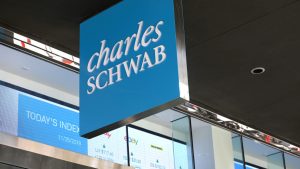Forecasts look good for Barclays (LSE:BARC) and the banking giant’s share price has been tearing higher.
City analysts expect normalised earnings to increase by around 9% this year and almost 18% in 2025.
However, those anticipated improvements come after a dip in earnings and operating cash flow during 2023. Welcome to the world of cyclical businesses where earnings, cash flows, dividends and share prices can give investors a volatile long-term ride.
A mixed bag of investment outcomes
Cyclicality in the banking sector is the biggest risk shareholders face when investing in Barclays shares. It would be easy to mistime an investment and end up losing money.
But the outcome after putting £2,000 into the stock five years ago would have been positive. Back then, the share price was around 171p and today (6 November) it’s at 256p, as I write.
Therefore, the gain on the stock rise would have been 85p per share. However, there have been dividends to collect along the way too. The firm paid out 25.15p per share in dividends over the past five years.
That means the total return per share has been around 110.15p, or about 64%. So an investment of £2k would now be worth in the region of £3,280 — not bad!
However, investors choosing to invest just a year ago will have done better with a 94% total return. A £2k investment made in November 2023 would now be worth around £3,880 — that’s even better, and with a shorter holding period!
Cyclical investing can turn traditional investing assumptions upside down. For example, holding stocks for longer periods can often improve an investors’ chance of higher total returns. But that’s not necessarily true with the cyclicals.
For example, £2k invested in Barclays shares 10 years ago would have delivered the worst total return performance of these examples. The shareholder would have received dividends worth 48.75p per share and seen the stock price advance by just 20p. So that’s a lean gain of 68.75p or just 29% — an unsatisfactory outcome for a 10-year commitment, I’d argue.
Focused on income returns
As I see things now, the chances of a negative outcome ahead are elevated for new shareholders because the share price is higher. Cyclical businesses tend to ebb and flow over time, and that means we may see further volatility in trading ahead.
Nevertheless, many shareholders will likely have bought the shares for dividends because the firm often displays a high-looking yield.
Looking ahead, Barclays says it plans to return “at least” £10bn of capital to shareholders between 2024 and 2026. That will be via dividends and share buybacks. However the company prefers buybacks.
The firm expects to keep the total dividend stable at the 2023 level “in absolute terms”, with progressive dividend-per-share growth driven by share-count reduction as it buys back shares.
Right now, the forward-looking dividend yield for 2025 is running at just over 3.6%. However, that valuation looks a little stretched. If the banks yield at least 5%, the income helps to compensate shareholders for the cyclical risks of holding their stock.
Therefore, I’d expect more ups and downs ahead for the share price rather than consistent rises.
This post was originally published on Motley Fool




